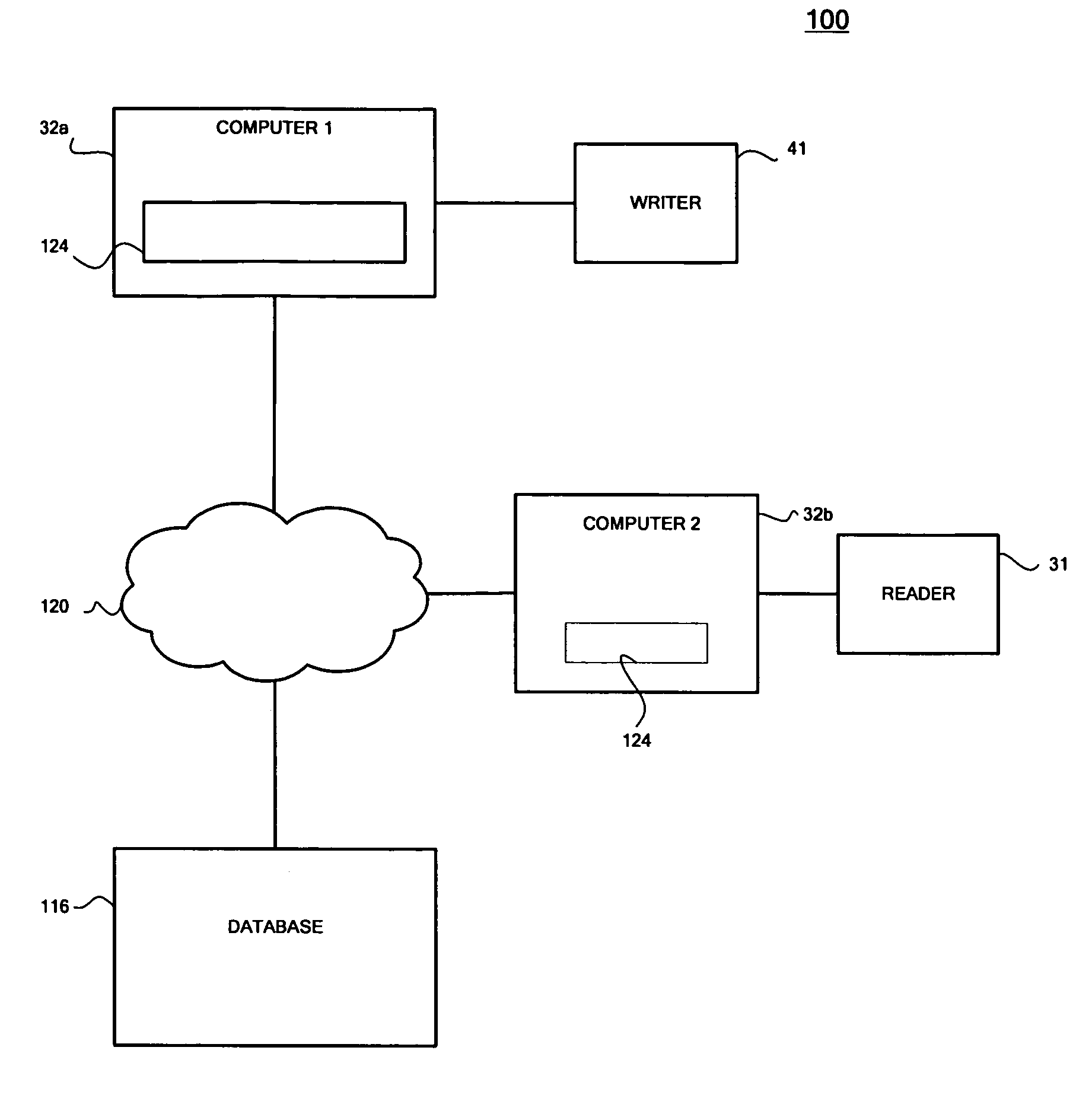Method and system for storing, retrieving and updating information from an information card
a technology of information cards and information, applied in the field of methods and apparatus for storing, retrieving and updating information on information cards or tags, can solve the problems of difficult to arrange card information, inefficient and often inaccurate data keying, and images that do not allow for sorting by multiple categories, so as to improve efficiency
- Summary
- Abstract
- Description
- Claims
- Application Information
AI Technical Summary
Benefits of technology
Problems solved by technology
Method used
Image
Examples
Embodiment Construction
[0061] Reference will now be made in detail to the preferred embodiments of the present invention, examples of which are illustrated in the accompanying drawings.
[0062]FIG. 1 illustrates the front of an electronic information card 10, with traditional card information printed thereon including the name of the company, the name of the representative, the title and email address of the representative, and the address and telephone number of the company. The card 10 is made from paper or equivalent material for traditional business cards, so as to be inexpensive and disposable. In other embodiments disclosed herein, the cards may be made of plastic, laminated material, or other more rugged material.
[0063]FIG. 2A illustrates the back side of the electronic information card 10 which includes computer readable storage media strips 15. The strips 15 are secured to the back side of the card 10 so as to not adversely effect the data storage characteristics of the strips 15. The strips 15 m...
PUM
 Login to View More
Login to View More Abstract
Description
Claims
Application Information
 Login to View More
Login to View More - R&D
- Intellectual Property
- Life Sciences
- Materials
- Tech Scout
- Unparalleled Data Quality
- Higher Quality Content
- 60% Fewer Hallucinations
Browse by: Latest US Patents, China's latest patents, Technical Efficacy Thesaurus, Application Domain, Technology Topic, Popular Technical Reports.
© 2025 PatSnap. All rights reserved.Legal|Privacy policy|Modern Slavery Act Transparency Statement|Sitemap|About US| Contact US: help@patsnap.com



